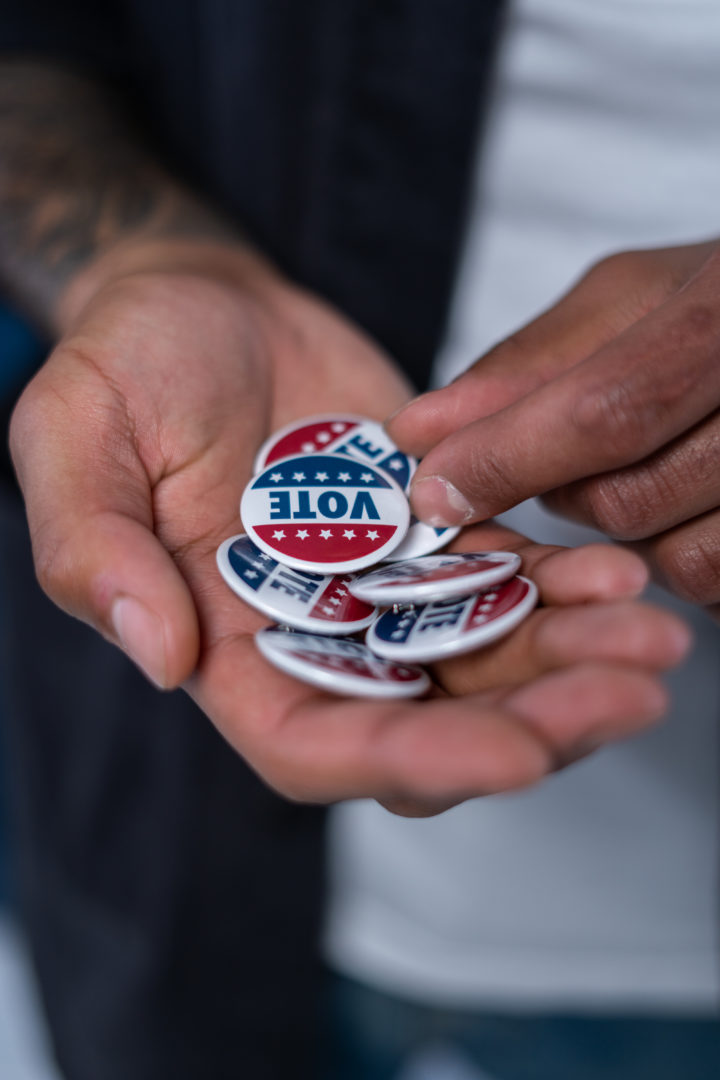October 27, 2020
Voting has long been viewed as an opportunity for people to have a say in who gets elected to represent them. It is often revered as a right and privilege that unfortunately not all get to experience equally in America. For many of CPE’s high school and college students, the reality of the last four years is the only political landscape they’ve ever known as young adults. The most recent and pernicious attempts to actively discourage Black voting creates an environment where your typical 18 to 20-year-old might look around and think that they’re not meant to be counted. But these attempts at disenfranchisement aren’t new.
Dating back to 1776, the right to vote was initially granted to White men over the age of 21 who owned property. It was a law used as a way to minimize political input from minorities and women. It wasn’t until nearly 200 years later in 1964 when the federal Civil Rights Act was passed that ensured all men and women age 21 and older regardless of race would have the right to vote. Within the span of those 188 years, Black people faced voter discrimination and fell victim to strategic tactics used such as voter suppression and voter disenfranchisement to silence their voice. This form of systemic racism is prevalent even today and influences the voting issues we’re seeing across the nation.
From 1776 to 1964, Black Americans were met with literacy tests, poll taxes, and intimidation to silence their vote. There are now more than sixty forms of voter suppression identified by The Voting Rights Alliance. Limiting access to polling locations is one of them. Texas is a prime example of a state that has actively taken measures to silence voters. Hundreds of polling locations have been closed leaving voters with access to one ballot drop off location per county. For larger counties such as Harris County with nearly 4 million residents, the decision for some increases the distance needed to travel to cast their vote and significantly inconveniences voters with disabilities.
Election rules can be nuanced and vary state by state, as is the case with provisional ballots. These ballots are counted but subject to the verification of that voter’s eligibility. A report from the Center for American Progress stated that in 16 states, the use of provisional ballots is more frequent in counties with higher percentages of minority voters.
In addition to not knowing if one’s vote will count, there are intentional efforts being used to silence the Black vote including the removal of voters from the rolls and reinstating poll taxes to stop former felons from voting. It was reported that 313,243 names were removed from Georgia’s voter rolls in late 2019. Their findings claim that 63.3% of voters had not, in fact, moved and were purged in error. The Wisconsin Supreme Court is weighing the decision to remove 130,000 voters from the rolls, and in Pennsylvania a federal lawsuit is alleging that 800,000 registered voters should be classified as inactive and removed.
In Florida, about half of the 31,400 convicted felons on the voting rolls identified by the Times/Herald/ProPublica analysis are Black. Yet, the U.S. Court of Appeals for the 11th Circuit overturned a decision made by U.S. District Judge Robert Hinkle to allow most felons who owe court costs the opportunity to vote.
Black people encounter a unique set of challenges that other races are spared from experiencing. Issues such as the wealth gap, higher rates of unemployment, reforming the criminal justice system, and access to adequate resources for low-income neighborhoods and quality education are things that disproportionately affect the Black community. In a quest to see low-income students to and through college, voting matters as policies will undoubtedly shape the support and resources allocated to higher education.
When candidates are elected into office, there is an expectation from voters that governing officials will address specific challenges and create more opportunities for the people they govern. If the Black vote is suppressed, these matters go unresolved and even worse, unaddressed.
For information on where to go to vote in the DMV area, voters can find their location below:
